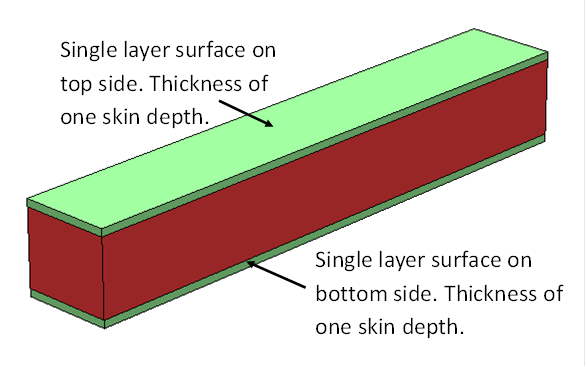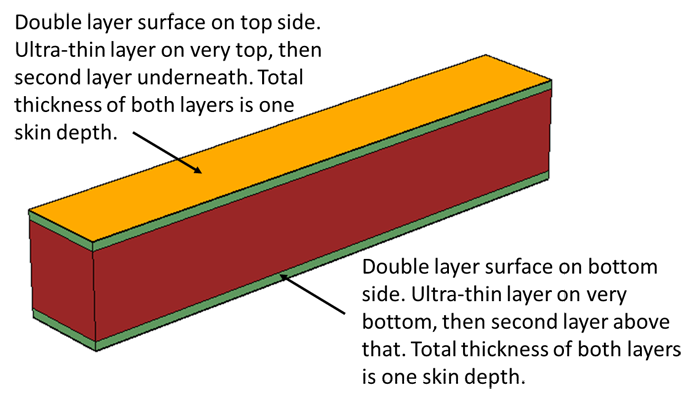TrueVolume Thick Metal Modeling in Sonnet
TrueVolume
The TrueVolume model divides the volume of a thick conductor into rectangular metal cubes, and then uses Sonnet's volume subsections to model those cubes. These volume subsections account for the full 3D geometry of a subsection in all coupling calculations. Therefore, the physical thickness of the metal conductor is inherently accounted for with the use of volume subsections.
The vertical divisions or Z-meshing of the thick conductor, are optimized to automatically provide maximum accuracy in terms of metallization loss and capacity coupling. This is important as the distribution of current on and within a thick conductor is a function of the metal properties, frequency, and the proximity of the conductor to other nearby conductors. Sonnet provides two options to control this Z-mesh method:
• Single layer surface
• Double layer surface
The Single layer surface method is the default method, and it has the minimum requirements in terms of memory usages and simulation time. Shown below is a cross-section of a TrueVolume conductor using the Single layer surface Z-mesh method:

For this method , the TrueVolume conductor is divided into three layers:
1) One skin depth thick surface layer on the top side.
2) Middle Layer
3) One skin depth thick surface layer on the bottom side.
The Double layer surface method is the preferred method when there is strong capacitive coupling between the TrueVolume conductor and other nearby conductors. Shown below is a cross-section of a TrueVolume conductor using the Double layer surface Z-mesh method:

For this method, the True Volume conductor is divided into five layers:
1) Ultra-thin outer layer on the top side. Required for accurate capacitive coupling calculations.
2) Internal layer near the top side. Sum of layers 1) and 2) is one skin depth thick
3) Middle layer.
4) Internal layer near bottom side. Sum of layers 4) and 5) is one skin depth thick.
5) Ultra-thin out layer on bottom side. Required for accurate capacitive coupling calculations.



